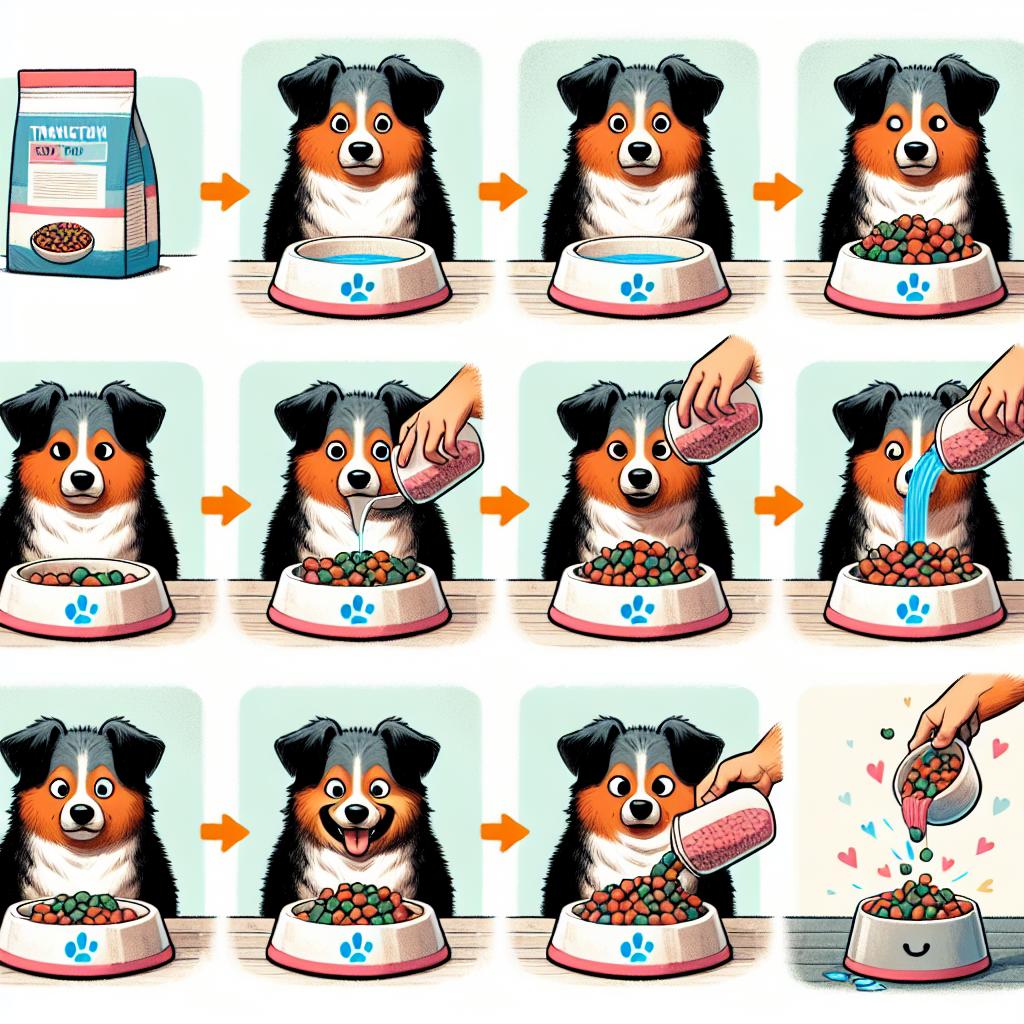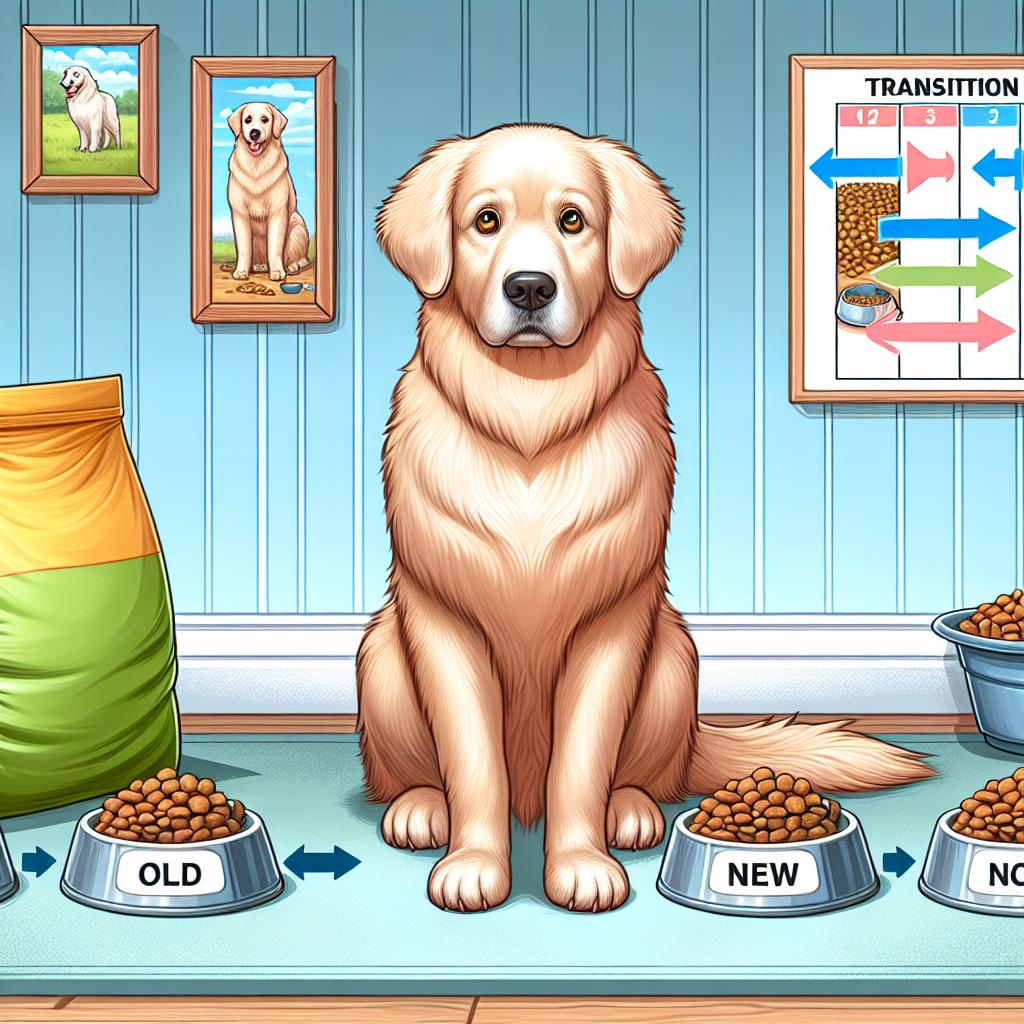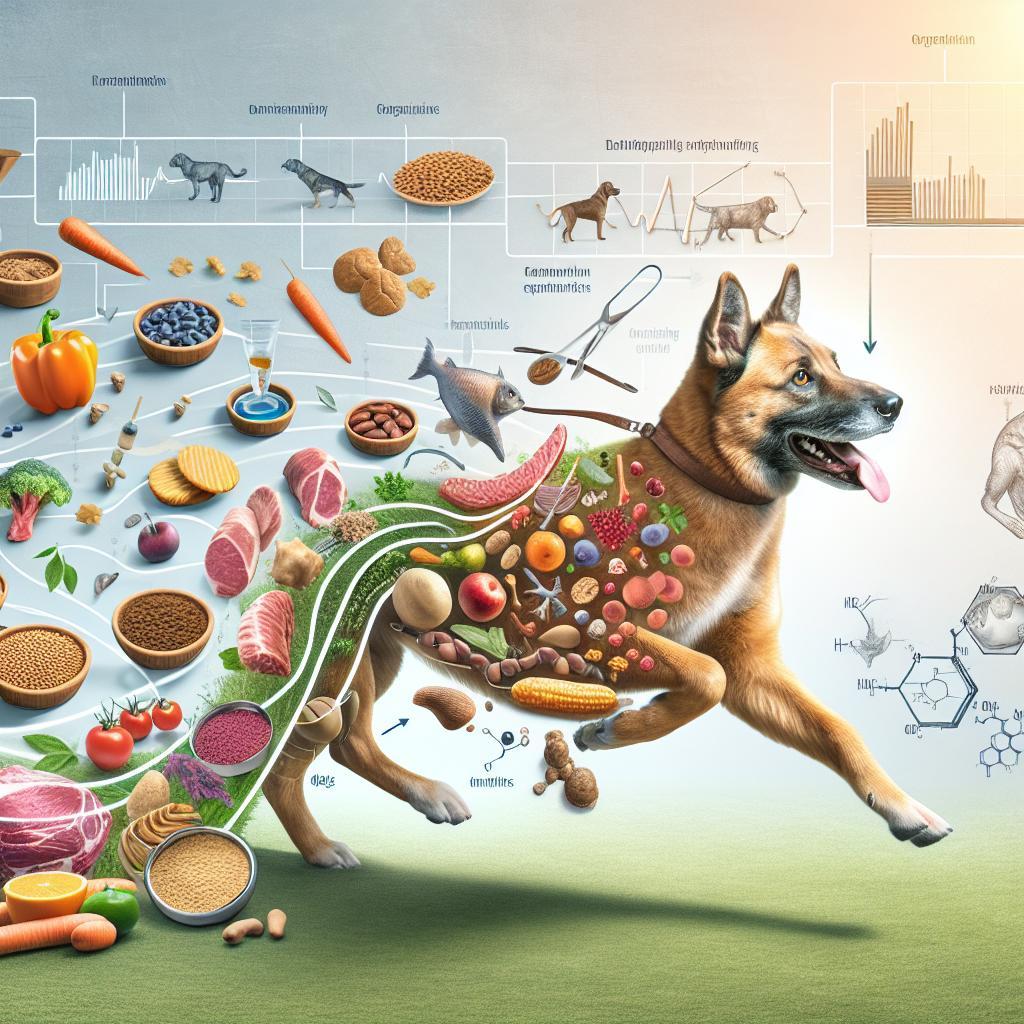Title: How to Transition Your Dog to a New Diet Safely
Every devoted dog owner understands the importance of providing a balanced and nutritious diet for their four-legged companions. Just as humans sometimes need to change their eating habits for health or lifestyle reasons, our furry friends may also benefit from a diet transition. Whether you’re introducing a new brand, switching from kibble to raw food, or accommodating specific health needs, ensuring a smooth and safe dietary change is crucial. A sudden shift in diet can lead to digestive upsets, behavioral changes, or even reluctance to eat. So, how do you navigate this change without causing stress for your pet? In this article, we will explore effective strategies and practical tips to help you transition your dog to a new diet safely, ensuring they thrive with each meal. With a little patience and knowledge, you can make this journey a positive experience for both you and your beloved canine companion.
Understanding the Importance of a Gradual Transition
Transitioning your dog to a new diet is not just a matter of switching food; it requires careful consideration and planning to avoid digestive issues and discomfort. A gradual approach allows your dog’s digestive system to acclimate to the new ingredients, reducing the risk of gastrointestinal upset. When you introduce a new diet too quickly, it can lead to symptoms such as vomiting, diarrhea, or loss of appetite, complicating the process and potentially causing distress for both you and your furry friend.
Implementing a slow transition allows you to monitor your dog’s response to the new food and make adjustments as necessary. Here are some benefits of a gradual dietary shift:
- Digestive Adaptation: Gives time for the gut microbiome to adjust.
- Identify Allergies: Easier to spot any food sensitivities or allergies.
- Improved Acceptance: Helps your dog accept the new flavor and texture.
To facilitate this process, consider adopting a simple transition plan. Below is a suggested schedule to guide you:
| Day | Old Food | New Food |
|---|---|---|
| 1-2 | 90% | 10% |
| 3-4 | 75% | 25% |
| 5-6 | 50% | 50% |
| 7-8 | 25% | 75% |
| 9+ | 0% | 100% |

Identifying the Right New Diet for Your Dog
Choosing the right diet for your dog involves understanding their unique health needs, age, and lifestyle. Consider factors such as size, activity level, and any pre-existing health conditions before making a decision. Pay attention to the ingredients in food labels—look for options that prioritize quality proteins and whole ingredients. Here are some important guidelines to help you identify a suitable diet:
- Life Stage: Puppies, adults, and seniors have different nutritional requirements.
- Special Needs: Dogs with allergies or specific health issues may require special formulations.
- Flavor Preferences: Every dog has different tastes; sometimes, it takes trial and error to find what they enjoy.
Once you’ve narrowed down the options, it’s advisable to consult with a veterinarian to finalize your choice. They can offer insights into specific brands or types of food that align with your dog’s health profile. When transitioning to a new diet, gradually mix the new food with the old over several days to prevent digestive upset. Consider the following tips for a smooth transition:
| Days | Old Food (%) | New Food (%) |
|---|---|---|
| 1-2 | 75 | 25 |
| 3-4 | 50 | 50 |
| 5-6 | 25 | 75 |
| 7+ | 0 | 100 |

Monitoring Your Dogs Health During the Change
During the transition to a new diet, it’s essential to keep a close eye on your dog’s overall health and well-being. Watch for signs that may indicate how they’re adjusting to the change. Some important indicators to monitor include:
- Appetite changes: Observe if your dog is eating more or less than usual.
- Energy levels: Note any changes in activity or playfulness.
- Digestive health: Keep track of any irregularities in stool consistency or frequency.
- Behavioral shifts: Look out for signs of anxiety or unusual behavior, such as excessive barking or whining.
It’s also beneficial to maintain a diary or log of your dog’s behaviors and reactions throughout the transition period. This can be a useful tool for identifying patterns and discussing any concerns with your veterinarian. You might find it helpful to create a simple table to track observations and key changes, like so:
| Date | Appetite | Energy Level | Stool Quality | Behavior Notes |
|---|---|---|---|---|
| Day 1 | Normal | High | Firm | Playful |
| Day 3 | Reduced | Moderate | Soft | A bit anxious |

Common Challenges and Solutions for Diet Transition
Transitioning to a new diet can come with its own set of challenges for your furry friend. One common issue is digestive upset, which may include symptoms like diarrhea or vomiting. To mitigate this, it’s essential to introduce the new food gradually. Start with a mix of the old and new food, slowly increasing the proportion of the new diet over a week or two. This gentle approach allows your dog’s digestive system to adjust without unnecessary distress. Additionally, watch for any signs of allergies like itching or ear infections, which may indicate that the new food isn’t suitable for them.
Another potential hurdle is picky eating, where your dog may refuse to eat the new food altogether. This can be particularly common if they are fond of their old kibble or moist food. To encourage acceptance, you might try serving the new food slightly warmed or mixed with a favorite topping such as broth or mashed pumpkin. Establishing a consistent feeding schedule can also help, as dogs thrive on routine. If issues persist, consult your veterinarian to explore different options or adjustments that align with your dog’s specific nutritional needs.
Q&A
Q&A: How to Transition Your Dog to a New Diet Safely
Q: Why is it important to transition my dog to a new diet slowly?
A: A slow transition helps your dog adjust to the new food and minimizes potential digestive issues, such as diarrhea or vomiting. Sudden changes can shock their system, leading to discomfort and health problems. Gradual adjustments allow their stomach and intestines to adapt properly.
Q: What is the recommended method for transitioning my dog to a new diet?
A: The most common method is the 7-day rule. Start by mixing a small amount of the new diet with your dog’s current food. Each day, gradually increase the ratio of the new food while decreasing the amount of the old food. By day seven, your dog should be fully transitioned to the new diet.
Q: How do I know if my dog is reacting well to the new diet?
A: Watch for signs of improvement in energy levels, coat condition, and overall mood. Healthy stools are also a good indication. If your dog shows signs of discomfort, such as excessive gas, diarrhea, or vomiting, you may need to slow down the transition or consult your veterinarian.
Q: Are there specific types of diets that require different transitioning techniques?
A: Yes, some novel or prescription diets may require specialized transitioning guidance. Always refer to the manufacturer’s instructions or consult your veterinarian for tailored advice, especially for dogs with food sensitivities or health conditions.
Q: Can I mix wet and dry food during the transition, or should I stick to one type?
A: Mixing wet and dry food can be beneficial and is acceptable during the transition, as long as it doesn’t overwhelm your dog’s digestive system. Just be mindful of the overall mix and try to ensure that your dog is sticking to the intended proportions for the new diet.
Q: What should I do if my dog refuses to eat the new food?
A: If your dog shows reluctance to eat, consider warming the food slightly or mixing in a small amount of low-sodium broth or a palatable topping. If they continue to refuse the new diet after a few days, revert to the old food and consult with your veterinarian about potential alternatives.
Q: Are there any red flags I should look out for during the transition period?
A: Definitely! Keep an eye out for persistent vomiting, diarrhea, lethargy, or significant appetite changes. If any serious symptoms develop or if your dog appears to be in distress, don’t hesitate to contact your veterinarian for advice.
Q: Can I supplement my dog’s diet during the transition?
A: While it’s crucial to follow a balanced diet, you can introduce certain supplements if recommended by your veterinarian. Be cautious with supplements, as overdoing them might upset your dog’s stomach or lead to nutritional imbalances.
Q: How can I ensure my dog feels positive about the new food?
A: Make mealtime a pleasurable experience by maintaining a routine, using positive reinforcement, and ensuring a quiet, comfortable eating environment. Offering the new food in exciting ways, such as through food puzzles or in a slow feeder, can also enhance their interest and enthusiasm for the change.
By following these guidelines and maintaining a watchful eye, you can help ensure your dog’s dietary transition is smooth and beneficial for their overall health.
To Wrap It Up
As you embark on this journey of transitioning your beloved canine to a new diet, remember that patience and attentiveness are your most valuable tools. Every pup is unique, and what works for one may not work for another. By taking the time to introduce changes gradually and by closely monitoring your dog’s reactions, you create an opportunity for a healthier, happier life.
Education and understanding are key; don’t hesitate to consult your veterinarian for tailored advice that meets your dog’s specific needs. With a gentle hand and an open heart, you can guide your furry friend through this process, ensuring they not only adapt but thrive. Your dedication to their well-being will foster a bond of trust and love, making every meal a moment of joy, exploration, and connection.
So, as you close this chapter on dietary transition, keep in mind that every wag of the tail is a testament to your efforts. Embrace the journey ahead, and may your dog’s new diet lead to vibrant health and boundless energy—one bowl at a time.

